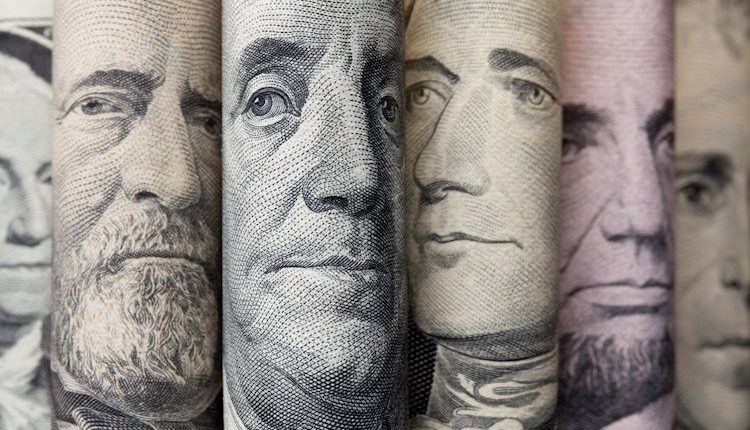- DXY trades near 106.80 on Tuesday.
- Market focus shifts toward upcoming Fed decision on Wednesday.
- Retail Sales fail to boost US Dollar enthusiasm.
The US Dollar Index (DXY), which measures the value of the USD against a basket of currencies, trades with gains around 106.80 on Tuesday, as upward momentum stalls following November’s Retail Sales release. Market focus remains on Wednesday’s decision on interest rates by the Federal Reserve (Fed), and a 25 bps cut is already priced in.
Daily digest market movers: US Dollar stuck as markets assess Retail Sales figures
- The two-day Federal Open Market Committee meeting begins on Tuesday as economic fundamentals suggest the Federal Reserve should not cut rates.
- November Retail Sales data slightly exceeded forecasts but failed to spark renewed US Dollar buying, traders weigh the marginal revisions and mixed underlying details.
- Monthly Retail Sales grew by 0.7%, beating the 0.5% estimate, while the previous print got revised up to 0.5% from 0.4%.
- Growth remains solid: The New York Fed’s Nowcast model tracks Q4 growth at 1.9% SAAR, while the Atlanta Fed GDPNow stands at 3.3%.
- Markets still anticipate a 25-basis-point rate cut on Wednesday, priced at over 95% probability, even as economic data challenge the need for immediate easing.
DXY technical outlook: Indicators improve, but upside momentum fades
US Dollar indicators recovered significant ground last week, yet the index lacks the strength to retest the 107.00–108.00 zone. On Monday, the index pulled back. Although it trades near 106.30 on Tuesday, the overall picture remains constructive if it can stay above its 20-day Simple Moving Average (SMA).
Persistent growth and upbeat US data may keep the Greenback supported, but caution is warranted until a decisive break above near-term resistance levels is seen.
Fed FAQs
Monetary policy in the US is shaped by the Federal Reserve (Fed). The Fed has two mandates: to achieve price stability and foster full employment. Its primary tool to achieve these goals is by adjusting interest rates. When prices are rising too quickly and inflation is above the Fed’s 2% target, it raises interest rates, increasing borrowing costs throughout the economy. This results in a stronger US Dollar (USD) as it makes the US a more attractive place for international investors to park their money. When inflation falls below 2% or the Unemployment Rate is too high, the Fed may lower interest rates to encourage borrowing, which weighs on the Greenback.
The Federal Reserve (Fed) holds eight policy meetings a year, where the Federal Open Market Committee (FOMC) assesses economic conditions and makes monetary policy decisions. The FOMC is attended by twelve Fed officials – the seven members of the Board of Governors, the president of the Federal Reserve Bank of New York, and four of the remaining eleven regional Reserve Bank presidents, who serve one-year terms on a rotating basis.
In extreme situations, the Federal Reserve may resort to a policy named Quantitative Easing (QE). QE is the process by which the Fed substantially increases the flow of credit in a stuck financial system. It is a non-standard policy measure used during crises or when inflation is extremely low. It was the Fed’s weapon of choice during the Great Financial Crisis in 2008. It involves the Fed printing more Dollars and using them to buy high grade bonds from financial institutions. QE usually weakens the US Dollar.
Quantitative tightening (QT) is the reverse process of QE, whereby the Federal Reserve stops buying bonds from financial institutions and does not reinvest the principal from the bonds it holds maturing, to purchase new bonds. It is usually positive for the value of the US Dollar.
Read the full article here

